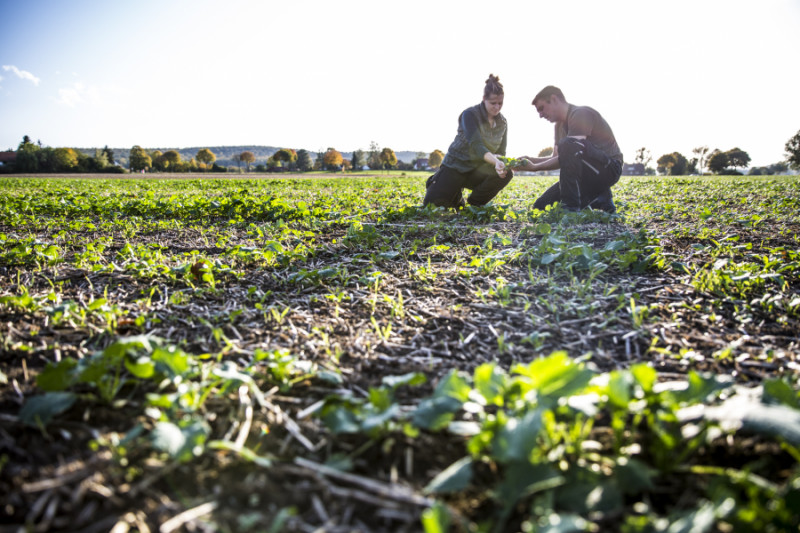No-Till Farming: Sowing the Seeds of a Sustainable Future
With enthusiasm, let’s navigate through the intriguing concept of No-Till Farming: Sowing the Seeds of a Sustainable Future. We’ll provide insightful information and offer innovative viewpoints to the readers.
Video about No-Till Farming: Sowing the Seeds of a Sustainable Future
No-Till Farming: Sowing the Seeds of a Sustainable Future

In an era defined by climate change and the urgent need for sustainable agriculture, no-till farming emerges as a powerful tool for revitalizing our soils, preserving biodiversity, and ensuring long-term food security. This revolutionary farming practice, which involves growing crops without disturbing the soil through tillage, offers a wealth of advantages that benefit both the environment and the farmer.
Unyielding Benefits for the Soil
The cornerstone of no-till farming lies in its ability to protect and enrich the soil. Tilling, the traditional practice of mechanically breaking up the soil, has detrimental consequences for soil health. It disrupts the delicate structure of the soil, leading to compaction, erosion, and the loss of organic matter. No-till farming, on the other hand, leaves the soil undisturbed, fostering a healthier and more resilient ecosystem.
1. Enhanced Soil Structure:
The soil’s structure dictates its ability to hold water, nutrients, and air. Tilling disrupts this structure, leading to compaction that hinders root growth. No-till farming, by preserving the naturally aggregated soil structure, creates a well-aerated environment that encourages deep root penetration, leading to stronger, more resilient plants.
2. Increased Organic Matter:
Organic matter is the lifeblood of healthy soil. It acts as a sponge, absorbing water and nutrients, improving soil fertility, and enhancing microbial activity. Tilling exposes organic matter to the elements, causing it to decompose rapidly. In contrast, no-till farming promotes the accumulation of organic matter through the incorporation of crop residues, cover crops, and reduced soil disturbance. This enriched soil acts as a natural fertilizer, reducing the need for chemical inputs.
3. Reduced Erosion:
Tillage leaves the soil exposed, vulnerable to the erosive forces of wind and rain. No-till farming, with its undisturbed soil surface, acts as a natural barrier, reducing soil erosion and preserving valuable topsoil.
4. Improved Water Infiltration:
Compacted soils often struggle to absorb rainwater, leading to runoff and waterlogging. No-till farming, by maintaining a well-structured soil, enhances water infiltration, reducing runoff and increasing water availability for plant growth. This is particularly crucial in regions facing drought conditions.
The Environmental Dividends
The benefits of no-till farming extend far beyond the soil, contributing significantly to a healthier environment.
1. Enhanced Biodiversity:
No-till farming encourages the growth of diverse plant communities, providing habitat and food sources for a wider range of wildlife. This increased biodiversity contributes to a more resilient ecosystem, better equipped to cope with environmental challenges.
2. Reduced Greenhouse Gas Emissions:
Agriculture is a significant contributor to greenhouse gas emissions, primarily through tillage practices that release carbon dioxide from the soil.
No-till farming, by preserving soil organic matter, acts as a carbon sink, sequestering atmospheric carbon and mitigating climate change.
3. Reduced Water Usage:
No-till farming’s improved water infiltration and retention capabilities translate to reduced water usage for irrigation. This is particularly crucial in regions facing water scarcity, ensuring a more sustainable use of this precious resource.
4. Reduced Pollution:
By minimizing soil disturbance and erosion, no-till farming reduces the leaching of fertilizers and pesticides into waterways, minimizing pollution and protecting aquatic ecosystems.
The Farmer’s Reward: Increased Efficiency and Profitability
No-till farming not only presents a slew of environmental advantages but also offers numerous benefits for farmers, contributing to increased efficiency and profitability.
1. Reduced Labor and Fuel Costs:
Eliminating tillage operations drastically reduces the need for labor and fuel, significantly lowering operating costs for farmers.
2. Increased Yields:
Studies have shown that no-till farming can lead to increased crop yields, attributed to improved soil health, water retention, and nutrient availability.
3. Improved Weed Management:
Closure
We hope this article has offered you great insights into No-Till Farming: Sowing the Seeds of a Sustainable Future. We hope you found this article useful and enriching. Stay tuned for our next article!.

No comments:
Post a Comment